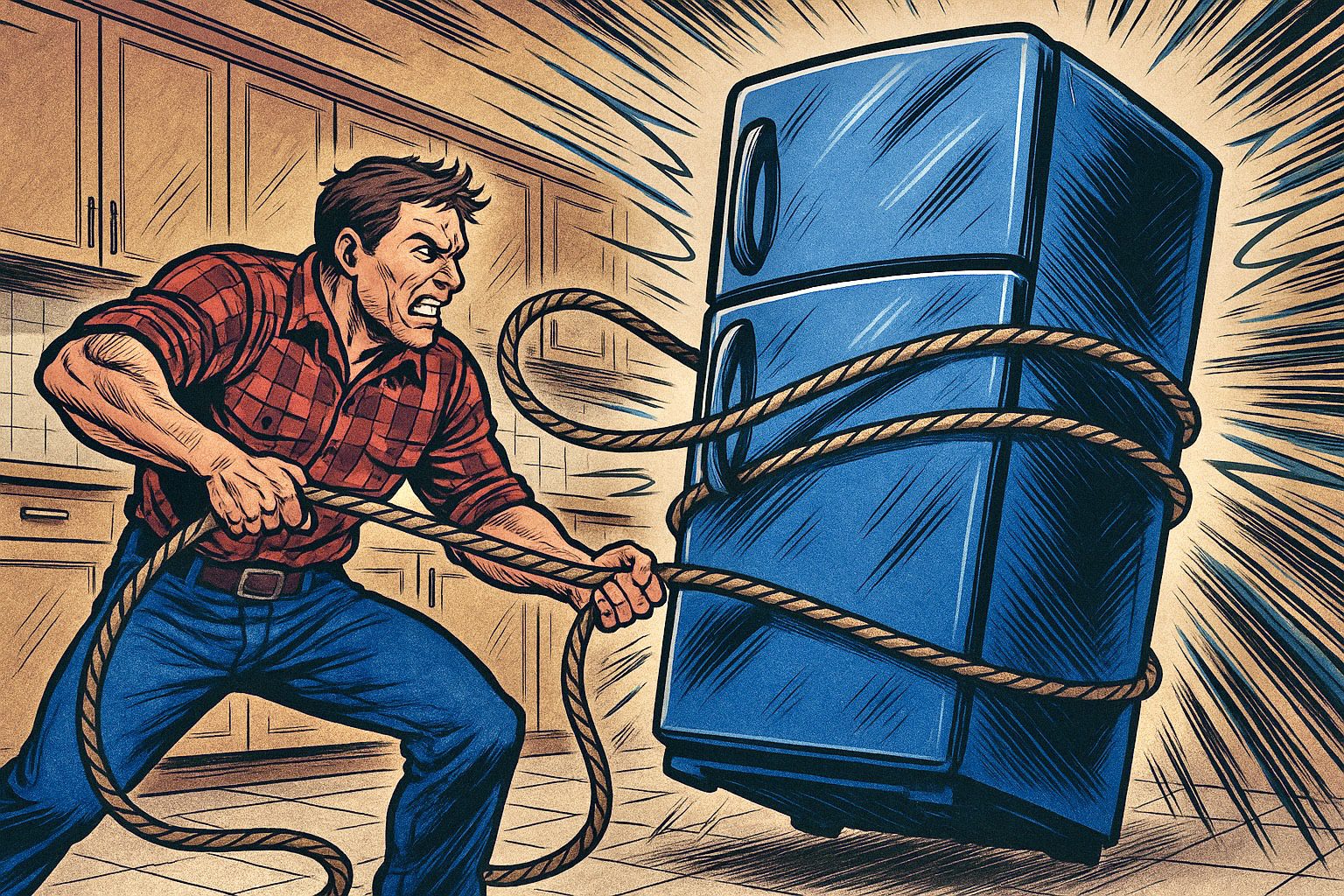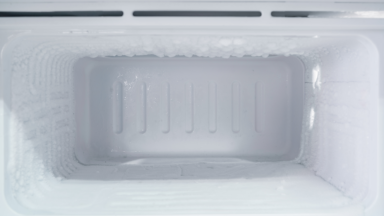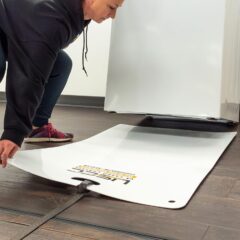Fridge vs. Human: How to Move a Refrigerator and Win

When it comes to home appliances, few things are bigger—or heavier—than your refrigerator. At 250 pounds or more, this isn’t something you can just scoot into place. In this guide, I’ll walk you through how to move a fridge safely and effectively. Whether you’re tackling a DIY move or just curious how the pros handle it, these steps will help protect both your fridge and your spine.
In this guide, I’ll walk you through how to move a fridge safely, effectively, and with your health and home in mind. Whether you’re doing a DIY move or just want to know what the pros do, these steps will keep your fridge (and your back) in one piece.
Step 1: Measure, Plan, and Clear Your Path
Start by measuring the fridge and all doorways or tight spaces along the move path. Most standard fridges are between 30–36 inches wide and up to 70 inches tall. Account for door handles and protruding water lines when measuring. Make sure your fridge will fit through every space it needs to. Remove rugs, furniture, and other obstacles. If the fridge has doors that open into a hallway, consider removing them temporarily. This can make a huge difference in tight spaces.
Pro Tip: Tape a path on the floor with painter’s tape to visualize the move and to help helpers stay aligned during transport.
Step 2: Gather Your Tools
You’ll need:
- Appliance dolly (rated for at least 300 lbs)
- Moving straps or bungee cords
- Furniture sliders or cardboard sheets
- Moving blankets or towels
- Work gloves
- At least one helper
Optional but helpful:
- Plywood sheets for uneven flooring transitions
- Bubble wrap or foam for extra door cushioning

Step 3: Prepare the Fridge for Moving
- Empty the fridge. Remove all food, condiments, and freezer items. Let the unit air out to avoid lingering smells.
- Unplug it and defrost for at least 24 hours to avoid leaks and moisture buildup during transit.
- Wipe down interior surfaces and secure or remove shelves and bins to prevent shifting damage.
- Secure the doors with tape, stretch wrap, or rope. Double-check that they can’t swing open.
- Wrap the exterior with a moving blanket to protect stainless steel finishes or glass panels from dings and scratches.
Pro Tip: Place a box of baking soda or a dryer sheet inside the fridge while it’s in transit to keep odors at bay.

Step 4: Protect Your Floors
This is where most people slip up—literally. Here’s how to protect the three most common types of flooring during a fridge move:
Hardwood Floors
Hardwood floors are a premium feature in any home—but they’re also vulnerable to scratches, scuffs, and dents during a move. Even a small slip with a heavy fridge can cause major damage.
- Use furniture sliders or neoprene runners to glide the fridge across the surface without direct contact.
- Lay down moving blankets, drop cloths, or a path of cardboard to shield against accidental bumps or drops.
- Always use a dolly with rubber wheels and avoid dragging. If you must pivot the fridge, lift slightly with help rather than twist it in place.
Tile or Marble Floors
Tile and marble look elegant, but they’re brittle under pressure. A concentrated load or sudden jolt can crack tiles or chip the edges.
- Place thick cardboard, plywood sheets, or plastic runners along your intended path to evenly distribute the weight.
- Ensure your dolly moves slowly and steadily, especially when crossing grout lines or transitioning between surfaces.
- Avoid sharp turns or sudden stops—keep the fridge aligned and rolling in a straight line as much as possible.
Carpeted Floors
Carpet may seem forgiving, but heavy appliances can easily stretch, bunch, or tear it—especially if it’s plush or loosely installed.
- Lay down hard plastic sheets, masonite, or plywood panels to create a firm base and reduce resistance.
- Never roll a loaded dolly directly on carpet—this can leave tracks or damage the padding underneath.
- Tape down any protective materials with painter’s tape or carpet-safe adhesive to prevent them from shifting mid-move.
Step 5: Lift with Care (or Don’t Lift at All)
Avoid lifting as much as possible. Instead, tilt the fridge gently and slide the dolly underneath from the side, not the front or back. I repeat, slide the dolly underneath from the side, not the front or back! Ensure that the dolly’s platform is centered under the unit. Use the straps to secure it tightly—you don’t want any wobbling during transport. Roll the dolly slowly and cautiously. If you hit a threshold, tilt back slightly and lift over using your legs, never your back. Keep your posture upright and your movements controlled.
Step 6: Load and Transport Securely
When loading into a moving truck:
- Always keep the fridge upright. Tilting can cause compressor oil to seep into cooling lines, which may damage the appliance.
- Use straps to anchor it to the wall of the truck.
- Don’t place items on top, even if it seems stable.
- Place it near the back of the truck, close to the door, for easy unloading.
At Olympia, our team follows strict protocols when loading appliances. We use commercial-grade straps, padded restraints, and dedicated appliance zones within our trucks to ensure refrigerators stay upright and stable throughout transit. Every item is strategically positioned to minimize shifting and protect delicate components—so your fridge arrives as fresh as the day it left.
Step 7: Let It Settle Before Plugging In
Once you arrive, let the fridge rest in its final position for at least 3–6 hours before plugging it in. This allows any shifted compressor oil to settle and avoids damaging internal parts. If the fridge is turned on too soon, the oil may not be in the right place to properly lubricate the compressor, which can lead to permanent damage to the appliance’s internal system.
While you wait, reconnect water lines (if applicable), reinstall interior shelving, and run a quick test cycle to ensure it’s cooling properly.
Not Worth the Risk? Let Olympia Handle It
Moving a fridge is no joke (as you can see in this video here!)—and one wrong move can cost hundreds in floor repairs, damaged appliances, or worse, a strained back.
Let Olympia take the pressure off your move. Our residential relocation team is trained to move heavy appliances with zero damage. We bring the right tools, techniques, and experience to handle every move with care.
Book Your Move Today or email us at info@olympiamoving.com for a free consultation.



